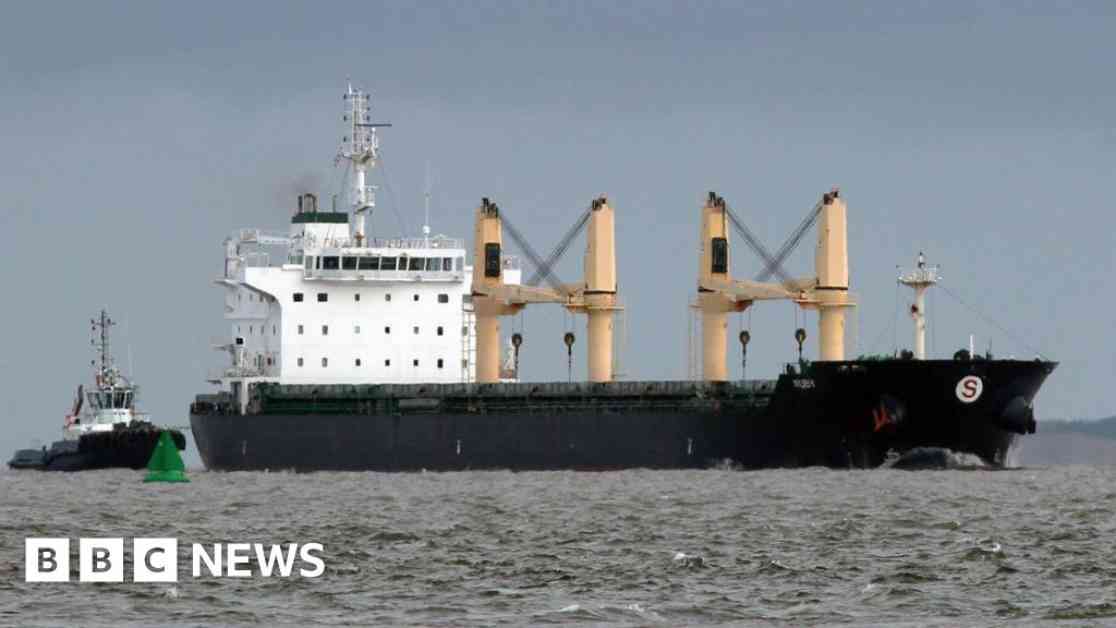Ammonium Nitrate Cargo Ship Navigating UK Waters
A Maltese-flagged cargo ship named Ruby has raised concerns as it travels through UK waters carrying a significant amount of ammonium nitrate, a potentially explosive fertiliser. The vessel, which has been rejected by several countries due to its cargo, is under the monitoring of HM Coastguard as it progresses towards UK ports.
The Ruby, owned by Maltese firm Ruby Enterprise, set sail from the northern Russian port of Kandalaksha in July. With 20,000 tonnes of ammonium nitrate on board, the ship’s journey has been closely followed by maritime authorities due to the risks associated with its cargo. The vessel was previously damaged but deemed seaworthy by authorities in Norway, leading to its current voyage through UK waters.
Challenges and Concerns Surrounding the Ruby
The presence of such a large quantity of ammonium nitrate on the Ruby has prompted various countries to reject the vessel from docking in their ports. This rejection stems from the catastrophic explosion that occurred in Beirut in 2020, where a warehouse storing ammonium nitrate detonated, causing widespread devastation.
While there is no immediate danger associated with the Ruby’s cargo, the sheer amount of ammonium nitrate on board raises concerns about the potential risks involved. Ammonium nitrate is commonly used as a fertiliser but can also be utilised in explosives, making its transportation a delicate operation that requires stringent safety measures.
The vessel’s recent journey has been marked by challenges, including a brief grounding incident after encountering a storm shortly after departing from Russia. Despite sustaining damage to its hull, propeller, and rudder, the Ruby was deemed seaworthy by authorities in Norway following an inspection by DNV Group. As a precautionary measure, the vessel was accompanied by an escort tug for the remainder of its journey to ensure safe passage.
Response from Maritime Authorities and Experts
Maritime authorities in various countries have closely monitored the Ruby’s progress and taken necessary precautions to mitigate any potential risks associated with its cargo. The vessel’s route through UK waters has been monitored by HM Coastguard, ensuring that appropriate safety measures are in place to safeguard against any incidents.
Experts in the field of chemistry have weighed in on the potential risks posed by the Ruby’s cargo. Professor Andrea Sella from University College London emphasised that while the chances of a Beirut-like disaster are relatively low, precautions must be taken to prevent any potential accidents. Welding repairs to the vessel could increase the risk of fire, highlighting the importance of maintaining strict safety standards during the transportation of hazardous materials.
The Ruby’s journey has sparked concerns about environmental damage in the event of a leak or contamination of the sea with ammonium nitrate. Marco Forgione, director general of the Chartered Institute of Export & International Trade, highlighted the immense damage that could result from such a scenario, emphasising the need for proactive measures to prevent pollution and disruption to maritime activities.
In light of the potential risks associated with the Ruby’s cargo, authorities in Lithuania and Sweden have reportedly banned the vessel from entering their waters. While the ship has faced restrictions and challenges throughout its journey, it continues to navigate through UK waters under the watchful eye of maritime authorities.
Conclusion
The Ruby’s voyage through UK waters carrying a substantial amount of ammonium nitrate has raised concerns about the safety and environmental risks associated with transporting hazardous materials by sea. Maritime authorities, experts, and industry professionals have underscored the importance of stringent safety measures to prevent any potential accidents or environmental damage during the vessel’s journey.
As the Ruby continues its passage through UK waters, HM Coastguard and other relevant authorities remain vigilant in monitoring the vessel’s progress and ensuring that appropriate safety protocols are followed. The challenges and concerns surrounding the Ruby’s cargo serve as a reminder of the critical importance of maintaining high safety standards in the transportation of hazardous materials to safeguard against potential risks and protect the environment.

